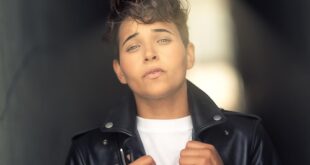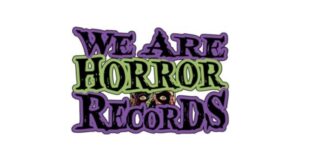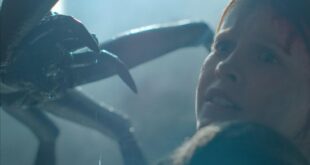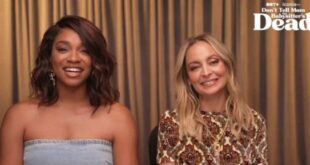There are so many talented people in the horror community and this time we had the awesome opportunity of talking with Rue Morgue’s Preston Fassel. Preston always has a lot going on, including promoting his new book Our Lady of the Inferno. We talked with him about where he got the idea for his book and other fun details. Read on to find out more!
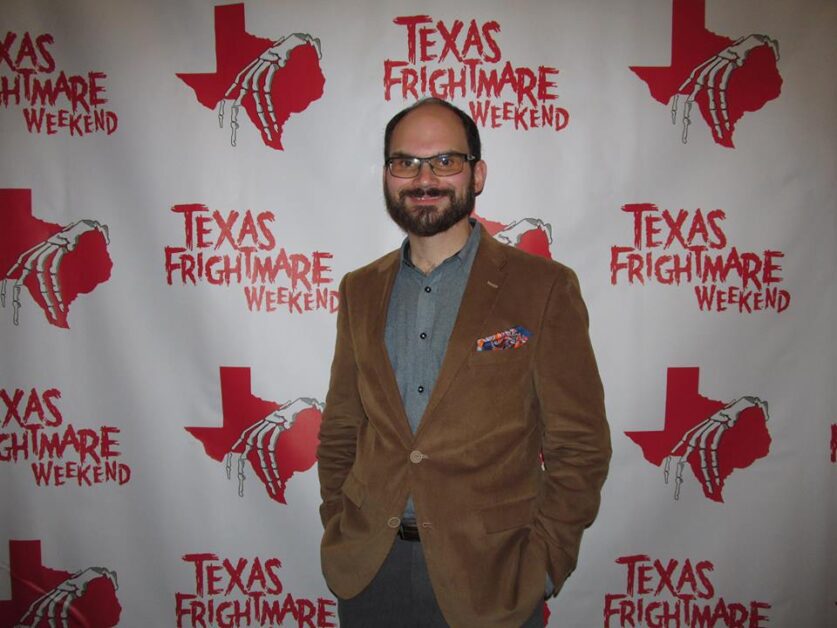
PopHorror – Thanks for talking with us, Preston! Tell us about yourself.
Preston Fassel – I was born in Houston, but grew up between St. Louis, Missouri, and a town called Broken Arrow, Oklahoma, which I really claim as my hometown. After high school, I interned for the Broken Arrow Police Department for about a year and a half, working in the evidence room, and that was incredibly formative for me as a person and as a writer. I’ve always been interested in writing but I really got serious about it in college. I went to a community college called Lone Star in Conroe, Texas, and while I was there I submitted several short stories to their literary arts magazine, Swirl, which was all set in Times Square in the 1970s. I continued writing when I moved on to Sam Houston to pursue my bachelor’s degree and tried to write a book, but I had too many characters and it spiraled out of control so I put writing aside for a while.
After I graduated, I went to work for an optometrist and, while I was there, began writing for an optometry magazine called 20/20, which led to my submitting work to Rue Morgue and becoming a regular contributing writer and blogger for them. I wrote a novella in 2012 that was a sort of spiritual sequel to my short stories in college, and then in 2014 decided to take a serious crack at a novel again. That turned into Our Lady of the Inferno.
PopHorror – That’s fascinating! What’s Our Lady the Inferno about?
Preston Fassel – Literally, the book is about the intersecting stories of two women in 1983 New York. Ginny Kurva is a twenty-one-year-old runaway from the Midwest who works as the right-hand woman to a small-time Times Square pimp in order to care for her disabled sister. Nicolette Aster is a waste management executive on Staten Island who moonlights as a serial killer, kidnapping prostitutes from Times Square and bringing them back to the dump after-hours to hunt and kill them. When the book begins, Ginny has become a sort of crime lord in her own right, enjoying a level of fear and respect on 42nd Street. However, the moral compromises she’s had to make to survive have begun to take their toll on her, and a number of personal and professional setbacks set her on the road to a nervous breakdown fueled by her burgeoning alcoholism. Meanwhile, Nicolette is entering her third year as a serial killer, and her mask of sanity has begun to slip to the point that she’s finding it difficult to isolate her “normal” persona from her serial killer persona. Nicolette becomes obsessed with Ginny while scouting for victims, and begins stalking her.
On a more thematic level, it’s an ode to the ’80s movies I grew up renting and watching with my brother; I used the template of a 1980s exploitation movie to take a look at deeper things like feminism, gender relations, PTSD, faith and redemption, the end of the grindhouse era, and the possibility for reconciliation between the sexes.
PopHorror – I can’t wait to read it! Where’d you get the idea for the story and characters?
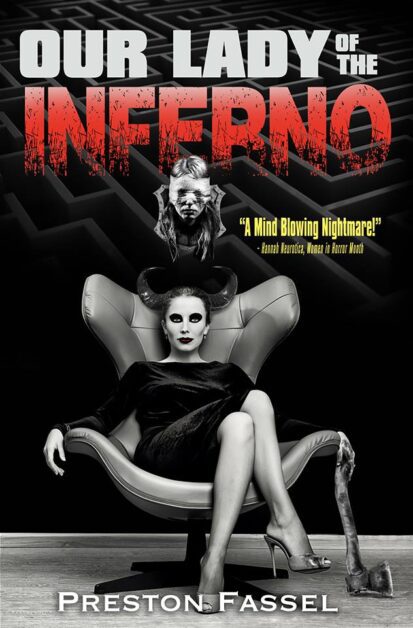
Preston Fassel – I’ve always wanted to tell my own ’80s story. Growing up in Oklahoma, my brother and I spent a lot of Friday nights at Hollywood Video and Warehouse Market, renting or just looking at old VHS tapes… mainly ’80s movies. It seemed that even in 2000, so much of Broken Arrow culture and aesthetics were still wrapped up in the ’80s, so I felt this real simpatico. The ’80s became this sort of high school escapist fantasy for me—this neon-lit, pink-and-green, synth-driven world of romance and possibility. As I got older, I discovered that some of the video stores — inexplicably, for a very conservative town in a very conservative state — had rich stocks of exploitation and grindhouse movies and began renting those as well. And as I began to learn more about the history of 42nd Street and grindhouse culture, my interest in that and the ’80s began to dovetail and I started thinking about a story that interwove those two fascinations.
Nicolette came out of my desire to see a story about a serial killer who thinks they’re the Minotaur but done well. Dexter, The Venture Bros., and American Horror Story all toyed with the idea, and, in my opinion, all dropped the ball. There was such possibility! I grew up playing video games with Minotaurs in them, like Final Fantasy, and always thought it was a really terrifying, fascinating creature. But here were all these shows treating it like a joke or an afterthought. I would do it better and scarier and take it to its fullest potential. My problem was that I had no idea who my hero would be.
Ginny had a more complex genesis. I’ve interviewed Jen and Sylvia Soska several times for Cinedump.com and Rue Morgue, and once after I mentioned my mother’s side of the family being Polish Jews, Jen Soska said to me, “Oh, do you know any Polish swear words? We’re Hungarian. My favorite swear is ‘Kurva.’ It means ‘whore.’” And for some reason my knee-jerk response to that was, “Oh, wouldn’t that be delightful? A character whose name is ‘Kurva’ and she’s a prostitute.” And then it all came together for me. It was like a lightning bolt. Serial killers regularly prey on sex workers. There was a thriving sex worker culture on 42nd Street. Things started developing from there. My initial concept for Ginny was, that she’s the Valley girl from Hell. I wanted her to be completely entrenched in the ’80s culture. And in this nod to ’70s exploitation cinema, I decided she’d be a martial artist, because it seemed that “kung fu hooker” was almost a stock character back then, and having her be a very adept fighter opened a lot of narrative possibilities, too.
In the very first scene as I wrote of Ginny, I wanted her to say something flip and sarcastic as she’s counting off reasons that it’s difficult to maintain a stable of prostitutes, and for some reason, it occurred to me to have her start counting in German. And I thought, “That works, but why does this Times Square prostitute who talks like Moon Zappa know German?” And then she’s walking upstairs afterward and thinking about the red color of this bed canopy, and I wanted her to compare it to something and a nebula came to mind because I’ve always been interested in outer space. And again, it worked, but– why? And I joke that by the time she’d gotten to her bedroom Ginny had gained about thirty IQ points. I would make her as brilliant as she was vicious, and it could be this very powerful statement about women having to sublimate their intellect to be accepted by the world, that Ginny would be this living embodiment of having the world ignore your passions and your knowledge and essentialize you as a literal sex object.
The decision to make Nicolette a woman came from my wanting to help foster more complex female characters in horror fiction. A sort of recurring theme in my time as a horror journalist, in my interviews with directors particularly, has been the lack of good female characters. And they’re right; it seemed very appropriate to use a story set in — and about — the 1980s to do that, because there were so many well-rounded, well-written female characters in ’80s horror cinema. And then in the ’90s, everyone became disaffected and apathetic and suddenly “complex female character” meant a girl in a trench coat who kicked guys in the crotch and treated everyone around her like shit. So I decided to make Ginny this throwback to characters like Sam and Reggie Belmont from Night of the Comet and Ellen Ripley from Aliens, who were multidimensional and complex but also likable and sympathetic.
And if Ginny was going to be this sort of embodiment of positive femininity, then I wanted Nicolette to be this encapsulation of negative femininity, the way that women cut one another down and exploit stereotypes to their own advantage. It would be very simple to have made the serial killer a man and told this very pat, “men bad, women good” story, but gender relations are a lot more complex than that. I didn’t want this to be a Lifetime movie. At the same time, there’s a tremendous lack of good female villains, which is a huge disservice. Every horror fan has his or her favorite villain, and I think that for most horror fans, there’s some identification going on there. Why can’t there be, and why aren’t there, more good female villains with whom female horror fans can identify? 99% of the time, a female villain is either a caricature or she’s motivated by a very stereotypical feminine pursuit — like a quest for youth or beauty — or she’s being lied/manipulated by an eviler male character. I wanted to create a frightening female villain who had total agency, who was her own person and who was driven by malice and insanity.
PopHorror – Wow, thanks for the indepth look at the characters and story! Where can people buy the book?
Preston Fassel – It’s available on Amazon.com in paperback and on Kindle, via Barnes and Noble’s online store or on request at Barnes and Noble brick and mortar stores, or via Createspace.
PopHorror – Perfect. Do you think there will be a part two?
Preston Fassel – I’d like to think so. I really fell in love with Ginny over the course of writing the book. She started out as a much nastier, much more vicious character, but as the book went on, I just kept finding these wells of love and beauty and passion that made her irresistible. The same thing sort of happened with her sister, Trish, to a different extent. She started life as a very vapid, somewhat dim-witted but good natured sidekick character and turned into who I think is the most emotionally intelligent character in the story. I’d love to revisit them a few years down the road and see where they are in 1985, 1986.
I do have a very good idea; I actually began putting together a sequel almost immediately after I finished Our Lady but ran into a few barriers that made me stop. One was that I felt I owed it to the book to see it through to publication before I could start working on something else. The other was that, the flip side of wanting to revisit Ginny is, if I’m going to write about her again, it’s going to mean her having to go back and face down some more demons… and as much as I’d love to get back inside of her head and go on another journey with her, a part of me just wants her to be okay.
PopHorror – Fingers crossed! What cons are you attending this year?
Preston Fassel – So far, Texas Frightmare Weekend is/was my only speaking engagement. I’ll be in attendance at Famous Monsters of Filmland and the Oak Cliff Film Festival in Dallas as well as Fantastic Fest in Austin. I’ve covered it for Rue Morgue for the past three years and I’m hoping to make this my fourth!
PopHorror – Awesome, maybe we’ll cross paths soon. Any other projects in the works?
Preston Fassel – I’m working on a spiritual prequel to Our Lady. It doesn’t involve any of the same characters but it’s set against the same backdrop of Times Square and features some of the same locations, though in the 1960s and 1970s. If one of the themes of Our Lady is the death of exploitation culture, and it’s told through the eyes of an outsider, Ginny, who becomes immersed in it, then I wanted to look at its birth and propagation from the perspective of a native of 42nd Street.

** Bonus Material
Preston also created a playlist to accompany a reading of the book. He chose all of the songs based on whether they would be on MTV or the radio during the time the book is set. Some are mentioned in the book itself, while others are thematically appropriate. Click here to check it out.
 PopHorror Let's Get Scared
PopHorror Let's Get Scared

